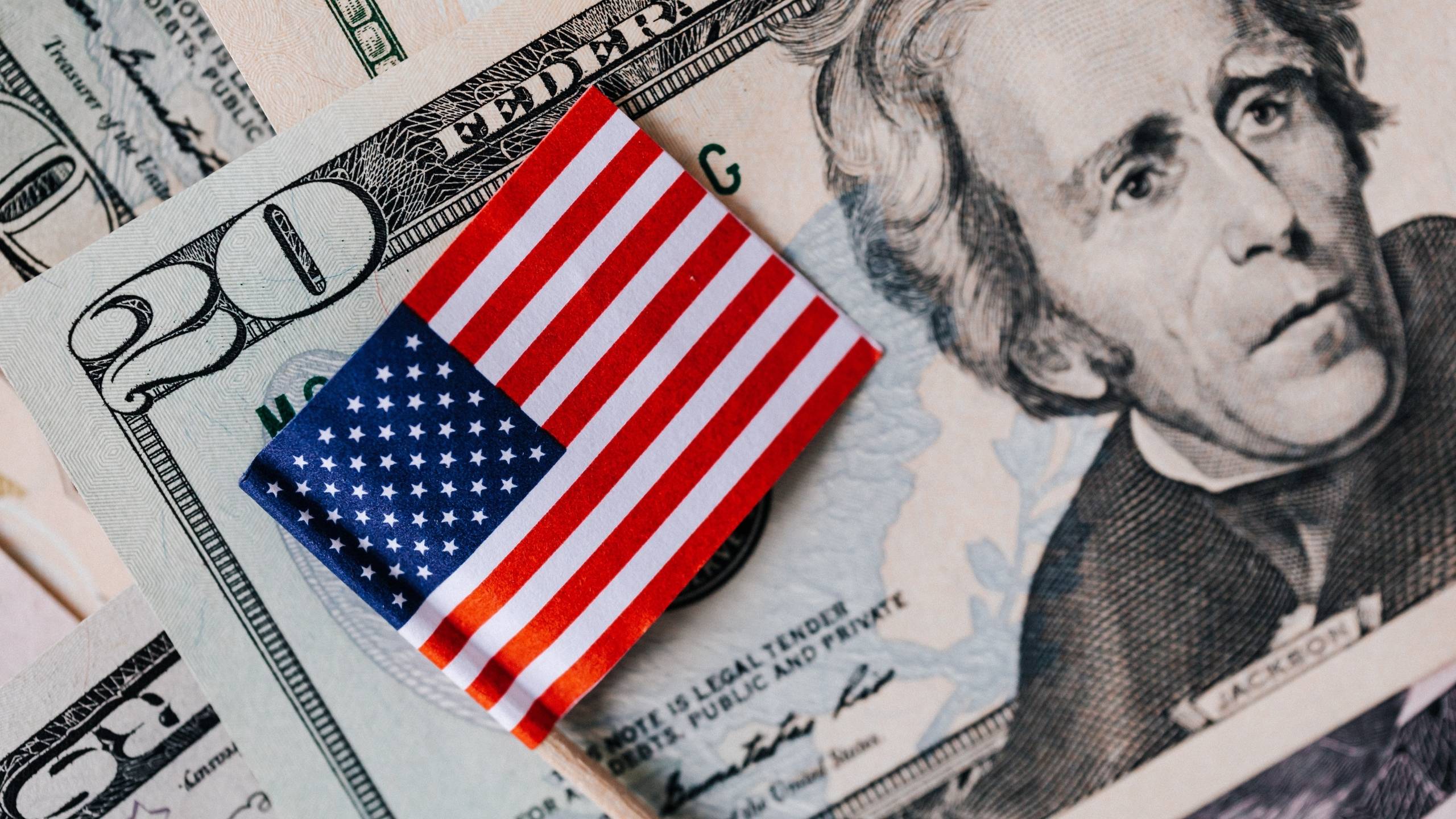Updated on 12.06.2025
The Trump Card or Gold Card is intended to secure a Green Card for wealthy investors for 5 million US dollars - without investment or job requirements. When will implementation begin, and what does it mean for the EB-5 visa?
Share article:

US President Donald Trump has sparked a debate about the future of the US investor visa by announcing a Gold Card or Trump Card for wealthy immigrants. The new program, which provides for a direct payment of 5 million US dollars to the US government, is intended to replace the existing "EB-5 Immigrant Investor Program" and reduce the budget deficit at the same time. But how and when will this plan be implemented and what alternatives are there for investors?
The Gold Card or Trump Card presented by US President Trump on February 25, 2025 is intended to provide foreign applicants with a direct route to a permanent residence permit (Green Card) – without the previous requirements for capital investment in US companies or job creation.
The program aims to replace the existing EB-5 visa, which has often been criticized for being susceptible to fraud. Instead, the flat fee of 5 million US dollars is to flow directly into the national budget, accompanied by a simplified application process. The Gold Card is intended to attract investment and reduce the US budget deficit at the same time.
According to US Secretary of Commerce Howard Lutnick, this is a "premium version of the green card" that is designed to attract "world-class talent and entrepreneurs". In contrast to the EB-5 visa, there is no obligation to create jobs or invest in certain economic sectors. Instead, the government emphasizes the expected macroeconomic effects of tax revenue and consumer spending by the new arrivals.
The EB-5 visa was introduced in 1990 to stimulate the US economy through capital investment by foreign investors and to create jobs. Under the following conditions, investors (as well as their spouses and unmarried children under the age of 21) are entitled to apply for permanent residence (Green Card) to apply:
The EB-5 visa was last reformed in 2022, with stricter review mechanisms designed to prevent fraud, maximize economic impact and shorten processing times. Since then, the minimum investment has been 1,050,000 US dollars, but can be reduced to 800,000 US dollars if the investment is made in a target employment area, such as rural areas or regions with high unemployment (Targeted Employment Areas).
In comparison to the Gold Card or Trump Card, the EB-5 visa is linked to genuine economic participation, while Trump's proposal only provides for a one-off payment to the state.
While the EB-5 visa has been channeling foreign investment into structurally weak regions since 1990, the Trump Card or Gold Card is based on radical simplification. Trump argues that the new programme will eliminate the "fraud and nonsense" of the EB-5 system, which has been criticized in the past for slow processing times and cases of abuse.
| Criterion | EB-5 | "Gold Card" |
|---|---|---|
| Costs | 800,000 - 1.05 million US dollars | 5 million US dollars |
| Investment target |
|
Direct payment to the US government |
| Bureaucracy | Extensive documentation and long application times | Simplified procedure |
| Citizenship | Possible after 5 years | Unclear time frame |
"The Trump Card" or Gold Card program is currently being advertised online. However, this serves only as an expression of interest and does not provide a legal basis for applying for a US visa.
As long as the Trump Card or Gold Card remains merely a political announcement without a legal basis, the EB-5 visa is currently the only proven way for foreign investors to obtain a green card through equity participation. Despite its challenges, it offers tangible benefits that make it attractive to many investors:
However, the EB-5 visa also has its challenges. The requirement, to create or maintain at least 10 jobs for US citizens (under certain conditions) and the still not insignificant investment sum requires strategic investment planning. There are also regional quotas which can influence processing times and approval processes. The currently very long processing times are also still a major hurdle.

For investors who want to establish a business presence in the U.S. more quickly or whose focus is not on long-term capital investment, alternative visa programs such as E-2 (investor visa) or L-1 (Manager transfer) represent a more flexible solution. While the E-2 Visa is particularly interesting for entrepreneurs who want to start or take over a US company, the L-1 Visa for managers or specialists who are moving from an existing company to a US branch. Change to a US branch. The E-2 (Treaty Investor) visa in particular offers significantly lower entry barriers with a much lower investment amount (around 100,000 US dollars).
Until the Trump Card is actually introduced, the EB-5 program remains the most realistic and legally secure option for many investors to obtain permanent residency in the United States.
The key question for investors at the moment is whether the announcement of the "Gold Card" is a realistic immigration route. Despite the promotion and official waiting list, there are considerable doubts about the practical feasibility of the program.
Several factors speak for high legal and political hurdles:
Although US Secretary of Commerce Howard Lutnick announced a quick launch within a few weeks, there is still a lack of concrete legal foundations. Without clear rules on the review of applications, the maximum number of participants or the exact use of the funds collected, the program could end in a wave of lawsuits. Trump spoke of up to 10 million cards being issued, which has met with skepticism in both US politics and among the public.
The introduction of the Trump Card or Gold Card would represent a significant shift in US immigration policy by providing a direct path to citizenship for wealthy individuals. While the program aims to generate increased revenue for the government and reduce the budget deficit, it also raises questions about social justice and ethical implications.
While the existing EB-5 visa has its shortcomings, particularly in terms of susceptibility to fraud, it offers a clear link between investment and economic benefit through job creation and economic stimulation. The Gold Card, on the other hand, focuses mainly on the applicant's financial capacity, with no clear requirements for direct economic contribution.
Ultimately, the Gold Card reflects Trump's philosophy of an immigration policy that places economic benefits above humanitarian aspects. However, without a broad political consensus and a clear legal basis, it is likely to remain a symbolic project for the time being. Whether the Gold Card will become a reality remains questionable. Until then, EB-5 is the only proven option for investors seeking a Green Card – even if there is a need for reform.
You are planning a Investor visa for the USA? Contact our experts for a customized strategy.
Date:
Wir und unsere Partner nutzen Cookies, um personenbezogene Daten wie z.B. Browsing-Daten zu speichern und abzurufen, um z.B. Inhalte und Werbung bereitzustellen und zu personalisieren sowie die Verwendung der Website zu analysieren und das Benutzererlebnis zu verbessern. Sie erfahren mehr über die Zwecke, für welche wir und unsere Partner Cookies einsetzen, wenn Sie unten auf den Button „Cookie Einstellungen“ klicken. Hier können sämtliche Einstellungen auch geändert werden. Nachträglich kann man jederzeit seine Cookie-Auswahl überdenken oder seine Einwilligung widerrufen, indem man auf den Link zu den Cookie-Einstellungen im Footer unserer Webseite klickt. Beachten Sie bitte, dass das Blockieren einiger Cookie-Typen unsere Möglichkeiten zur Bereitstellung von auf Ihre Interessen zugeschnittenen Inhalten haben kann oder einige Funktionen der Webseite nur eingeschränkt zur Verfügung stehen.
Durch klicken auf “Alle Cookies akzeptieren” stimmen Sie unserer Nutzung und der Weitergabe Ihrer Daten an unsere Partner zu.